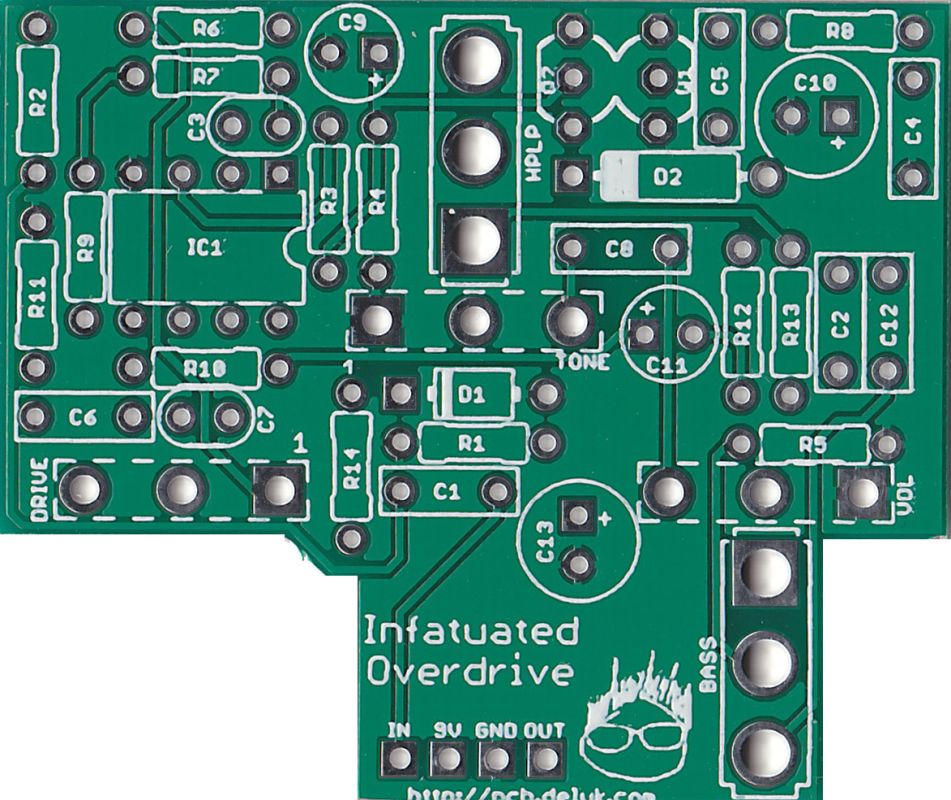Aquaticwombat
Member
Has anyone looked inside on this to see the differences with the original? It says it has a pair of germanium diodes. Is there an easy way to use the standard ADHD board to do the same thing?

This ^^^I would imagine that it’s using the Ge diode to block the body diode of the clipping MOSFET. Some iterations of the OCD don’t include a blocking diode and have the clipping arranged such that the body diode conducts before the gate junction of the MOSFET.
A hint of sarcasm there?But then I guess Mike Fuller is known for being honest and understanding and to never use hyperbole in his product descriptions so I guess an OCD with Ge diodes must be amazing.
Yup. It's the kind of shit we see all the time, right? Throwing any Germanium component in a pedal automatically makes it a Germanium pedal, right? You can market that....and people will buy it and not know they're getting ripped off.A hint of sarcasm there?
One MOSFET device (drain to gate, series with source) itself provides asymmetrical clipping due to the body, or substrate, diode (i.e., from source to drain) and the gate junction.Seems to me this is an easier way to create asymmetrical clipping without the use of three transistors.
The Ge diode is used to block the body diode of the MOSFET from conducting when the gate junction isn't forward biased. 'Reverse voltage' has nothing to do with it. Since it's arranged in series with the MOSFET (D-G->S), it's used to block the S-D body diode from conducting. If you arrange two MOSFETs as D-G->S + S->G-D, you get the gate junction MOSFET clipping, block the body diode from conducting, and you don't waste a Ge diode.I would guess that you would need a Ge diode with a reverse voltage that matches closely with transistor.
If you took all the hyperbole out of pedal marketing, then all theYup. It's the kind of shit we see all the time, right? Throwing any Germanium component in a pedal automatically makes it a Germanium pedal, right? You can market that....and people will buy it and not know they're getting ripped off.
Thanks for the explanation. So it would seem that the Ge diode thing isn't really required if the circuit was updated to the config that you outlined, right? If that's the case then, yeah, I suppose the Ge diode thing is bullshit.One MOSFET device (drain to gate, series with source) itself provides asymmetrical clipping due to the body, or substrate, diode (i.e., from source to drain) and the gate junction.
The Ge diode is used to block the body diode of the MOSFET from conducting when the gate junction isn't forward biased. 'Reverse voltage' has nothing to do with it. Since it's arranged in series with the MOSFET (D-G->S), it's used to block the S-D body diode from conducting. If you arrange two MOSFETs as D-G->S + S->G-D, you get the gate junction MOSFET clipping, block the body diode from conducting, and you don't waste a Ge diode.
"But...it's $5000. It's like buying a Lambourghini or Ferrari, right? It'll sound better than anything!"If you took all the hyperbole out of pedal marketing, then all thesuckersgolden eared tone fiends would have to find something else towasteinvest their money on. No more $5000 Centaurs if everyone understood that you and I can make the exact same thing for $50.
It all depends on what you're trying to accomplish with the clipping. E.g., the Zendrive uses a Ge diode in addition to the MOSFET clipping and Schottky blocking diodes. Keep in mind that the Gate junction Vf is pretty high with a very soft knee. In some cases, you'll get to op-amp saturation before the MOSFET clipping even conducts. Try out some variants on the breadboard (use the AMZ link above for more ideas) and see what works for you. As implemented in the OCD, I believe making 'germanium' the defining feature of the pedal is rather disingenuous, yes.Thanks for the explanation. So it would seem that the Ge diode thing isn't really required if the circuit was updated to the config that you outlined, right? If that's the case then, yeah, I suppose the Ge diode thing is bullshit.
You are right—that my mistake above. The Schottky should be indeed reversed. However, in the soft clipping arrangement, I'm not convinced that the MOSFET gate junction will conduct due to the soft knee and the high Vf. If the Zendrive were indeed setup in that way, I'd be interested to see if the scope showed much of a difference between the MOSFET arrangement and op-amp clipping.The bat41s are in the same direction as the body diode. (If anyone can contradict this I’d be curious to hear).
"But...it's $5000. It's like buying a Lambourghini or Ferrari, right? It'll sound better than anything!"
Umm...no, chief...it's not like buying an expensive sports car because, unlike a sports car, we can build a carbon copy of that $5000 pedal any day of the week. Nothing in there that can't be done by a Joe pedal builder. That's what many of these folks don't get.
